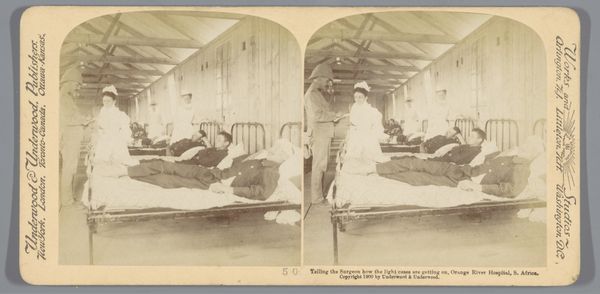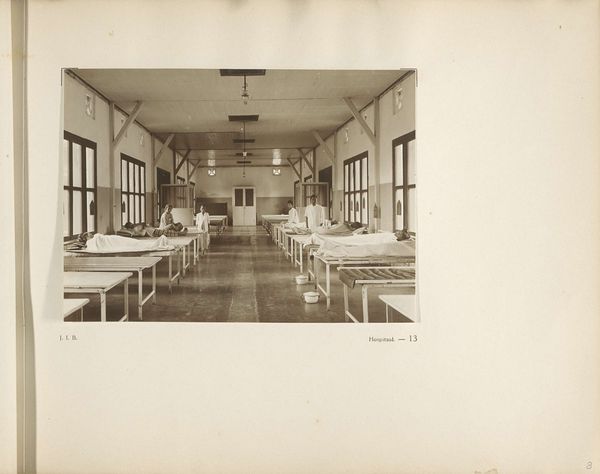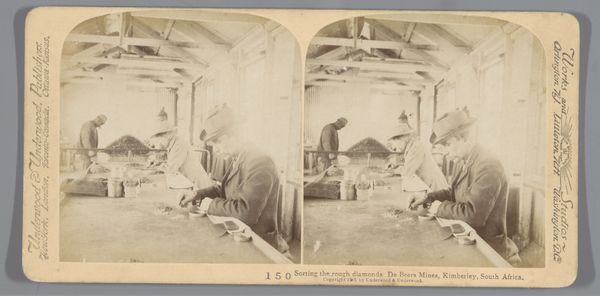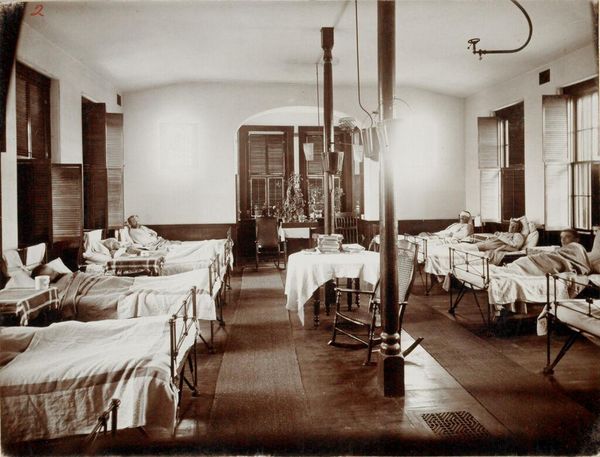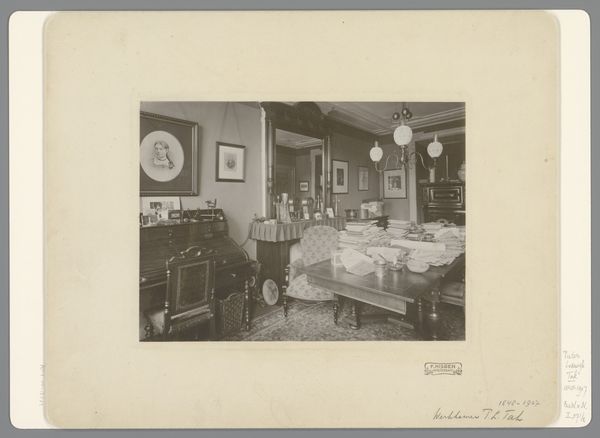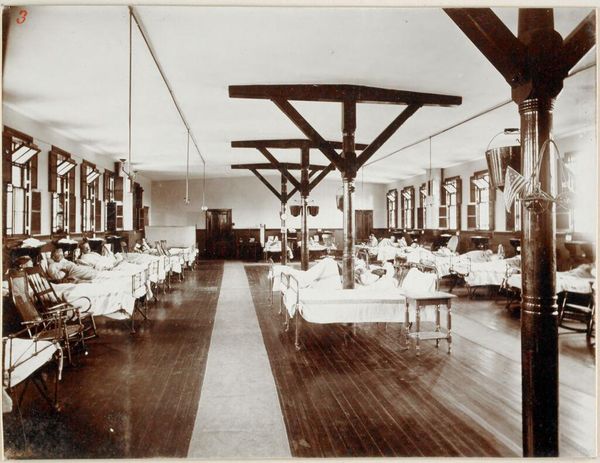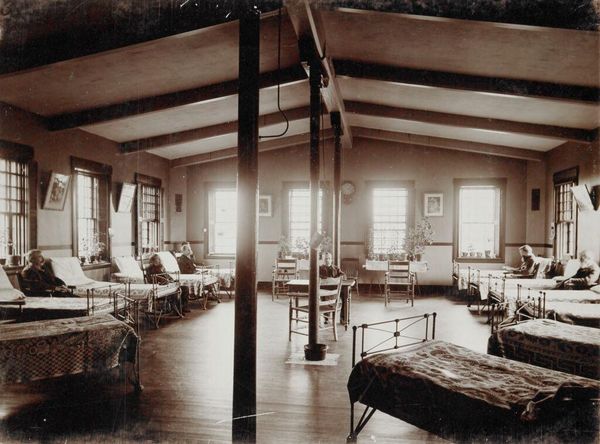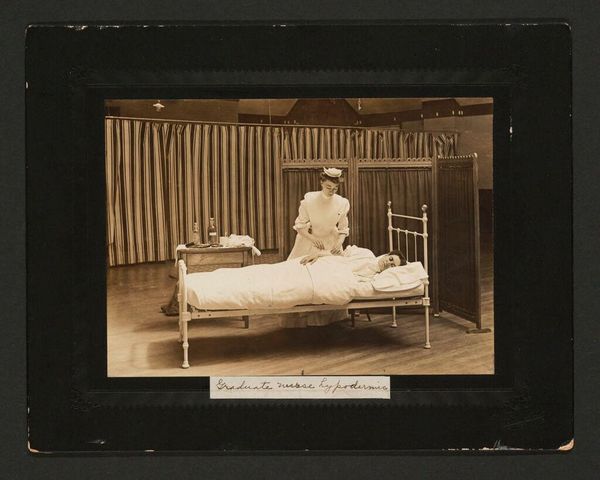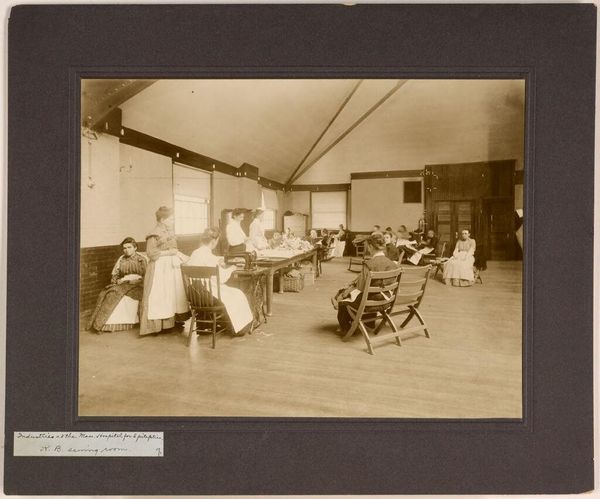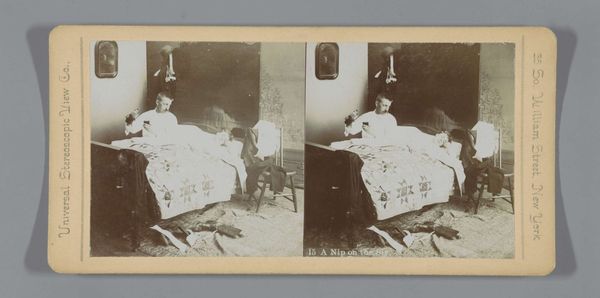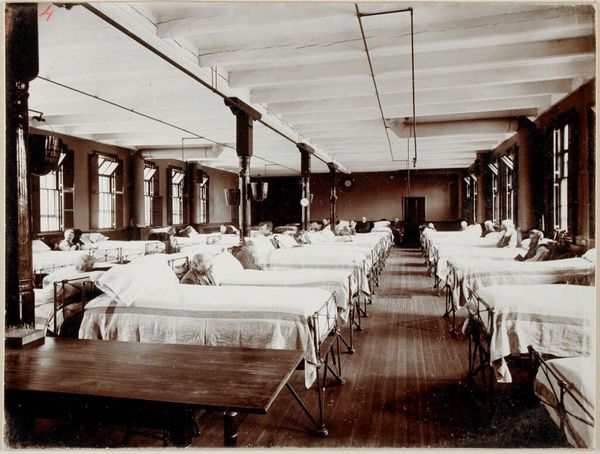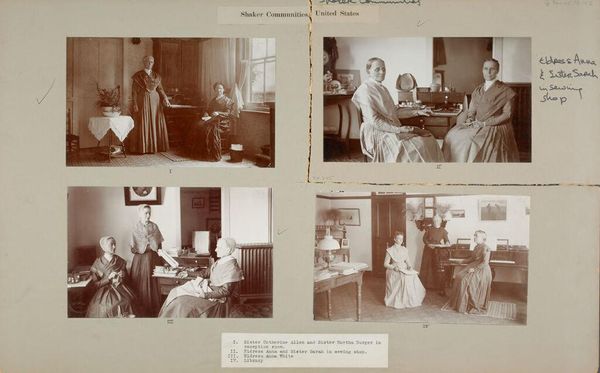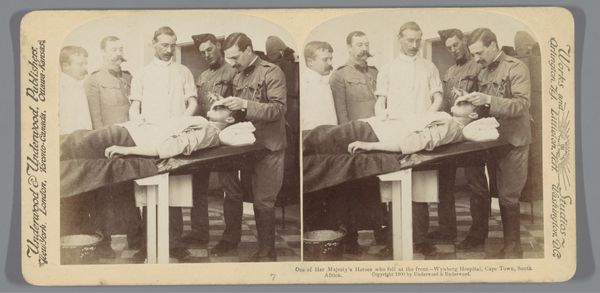
Interieur van een ziekenzaal in een militair ziekenhuis in Bloemfontein, Zuid-Afrika 1901
0:00
0:00
photography, gelatin-silver-print
#
portrait
#
photography
#
gelatin-silver-print
#
genre-painting
#
realism
Dimensions: height 88 mm, width 178 mm
Copyright: Rijks Museum: Open Domain
Editor: This gelatin-silver print, created around 1901, is titled "Interior of a ward in a military hospital in Bloemfontein, South Africa". The rows of beds and pale light give the whole scene a somewhat desolate feel. How do you interpret the scene? Curator: The long rows definitely lend a sense of… ordinance. Almost regimented. But think about what hospitals represent: places of healing but also places where individuals confront vulnerability, even mortality. Consider how the light, or the lack thereof, affects our perception. Does the muted palette evoke specific emotions for you, and might those colors carry symbolic weight? Editor: I see what you mean, yes, the muted colors could mirror a subdued spirit. It makes me think about remembrance. What purpose might images like this have served in its own time? Curator: Remember, photography was relatively new then. Beyond documentation, images offered powerful ways to construct collective memory. Soldiers as sufferers is a narrative told through the repetition of images; it helps to validate loss by linking it to a shared reality. What symbolic language emerges through repetition for you? What's reinforced each time this narrative is repeated? Editor: It's somber, but it emphasizes the sacrifices being made. So you're saying the picture is more than just what it is, a literal record. It creates and solidifies meaning for viewers, both then and even now. Curator: Precisely! And how that meaning echoes, and changes, with each viewing over time. Visuals are tools that encourage communal, often emotional, connections across generations. What do you make of the pictures hanging on the walls above the beds? How do you interpret those? Editor: They’re all hung at the same height – a continuation of order, or uniformity, across the ward… Maybe suggesting lives placed temporarily ‘on hold’? Thanks, that helps me see the broader picture! Curator: It also made me think more deeply about how photographic representation constructs our understanding of past events.
Comments
No comments
Be the first to comment and join the conversation on the ultimate creative platform.
